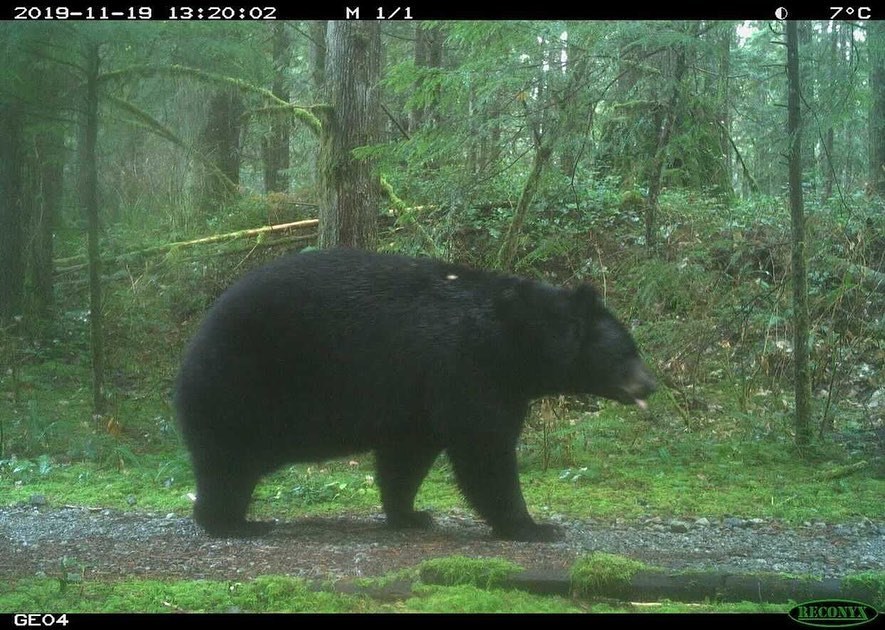Bears are beloved by animal aficionados year-round — but they might even look cuter as the weather starts to cool off.
In preparation for winter, B.C. bears fill their bellies with food through the spring and summer months. And while they also get a fluffier coat, their extra weight gives them a decidedly plump appearance in the late fall.
The University of British Columbia's Faculty of Forestry Wildlife Coexistence Lab is composed of a group of researchers that focus on human-wildlife coexistence across multiple species and scales, with a particular emphasis on large-bodied terrestrial mammals. The lab is led by Dr. Cole Burton, Assistant Professor in the Department of Forest Resources Management, and Canada Research Chair in Terrestrial Mammal Conservation.
In March of 2019, the group started placing camera traps in Golden Ears Provincial Park and the Malcolm Knapp Research Forest. Michael Procko, an international student from Colorado at UBC, is doing his master's thesis on wildlife responses to human activity in and around protected areas.
Aside from robust bruins, Procko says the program has captured a wide spectrum of interesting animal behaviour.
"A number of camera traps set in the Golden Ears Provincial Park have captured some amazing footage of wildlife over the past weeks," he tells Vancouver Is Awesome.
"A couple of park rangers state that a few animals appear to be more active during the daytime, too."
In 2020, V.I.A. shared footage from the park that showed a family of cougars bounding through the forest. The mother and her two large cubs move past the camera, which is placed in the forest.
Currently, there are 37 cameras in Golden Ears and 21 in Malcom Knapp, explains Procko. The team will be removing them in the coming days as that part of the project is ending.
And while they haven't thoroughly examined all of the footage yet, he mentions that animal activity seemed to be affected by lockdown measures.
From March 2019 to September 2020, Procko notes that the lab recorded 46 cougars in Golden Ears. However, 20 of the large felines were spotted in a mere five weeks. "The rate of which we were detecting cougars increased significantly."
What's more, some of them were spotted during the daytime, which is particularly uncommon.
"We did catch a few that were out during daytime hours and they're typically a crepuscular species," he says, adding that it is a little premature to suggest that it is a consistent pattern. That said, the mother and her cubs were "caught on numerous stations."
On Sept. 29, the Wildlife Coexistence Lab shared a roundup of some of the cold weather bruins for what it is calling "Fat Bear Week." Procko says this is the time when bears will start to fatten up in preparation for the winter ahead.
"This takes place any time before the winter when they are really inactive."
While the bears will hunker down during the colder months, he notes that it is a common misconception that bears hibernate. Instead, they go into a state of "torpor."
Torpor is defined as "a state of lowered body temperature and metabolic activity assumed by many animals in response to adverse environmental conditions, especially cold and heat," according to the Encyclopedia Britannica.
"The main difference between hibernation and torpor is that if an animal is threatened it can wake up and deal," adds Procko. In other words, a sleeping bear could wake up during this period if was disturbed and react fairly fast.
"I don't think that people should be all that concerned about disturbing them...but it is good to be aware that they are feeding right now," he notes.
"Be bear safe."



